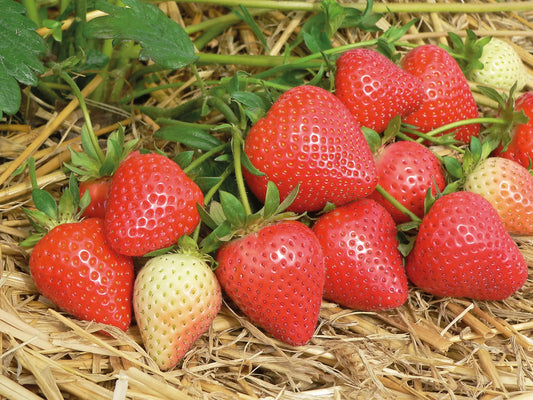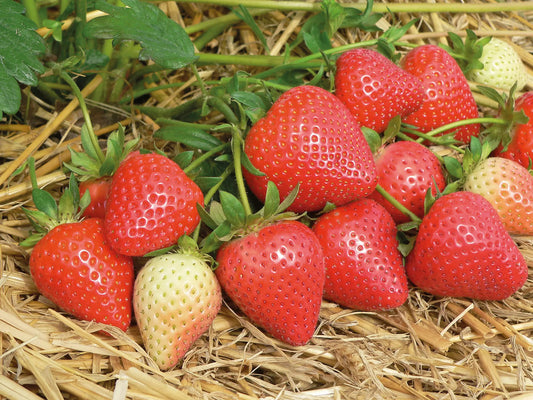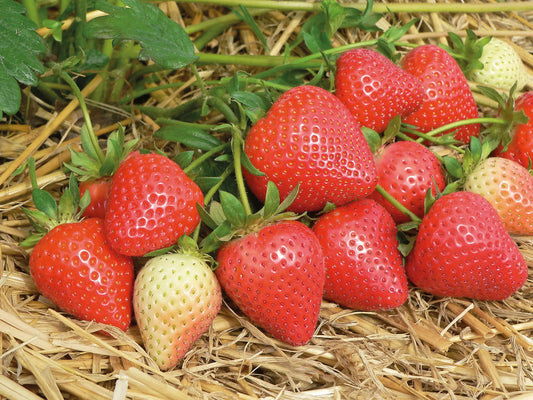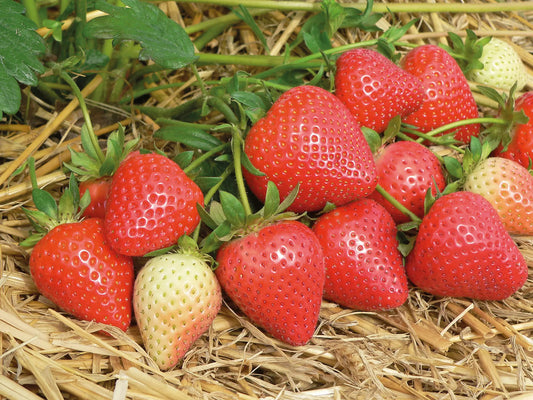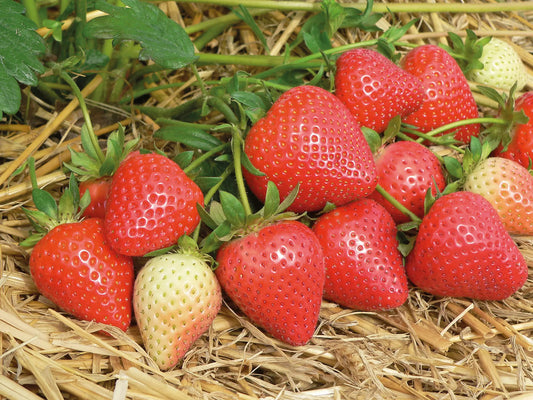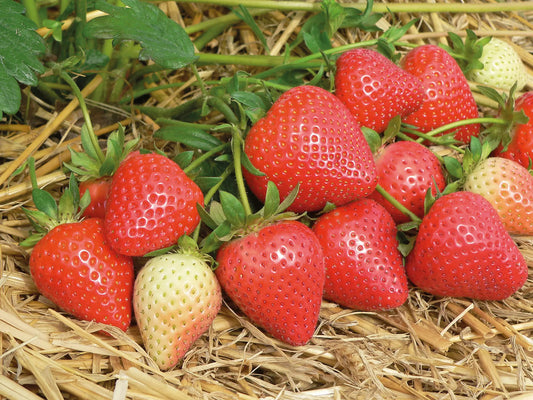-
Delivery from 10 plants to France, Switzerland and Europe
Delivery method -
Strawberry Plant Wholesale Supplier
About Us -
Quality Strawberry Plants
Strawberry technical itinerary -
Secure payment
Our Payment Terms
Malling Centenary Fresh Bare-Root Strawberry Plant
Malling Centenary Fresh Bare-Root Strawberry Plant
Price per unit (€ excluding VAT) excluding shipping. Our prices are based on volume. We offer you the best option based on your needs.
 - Add the desired date to your quote request
- Add the desired date to your quote request
- Buy now and get it delivered when you're ready to plant
- Delivery from 10 plants to France, Switzerland and Europe
Couldn't load pickup availability
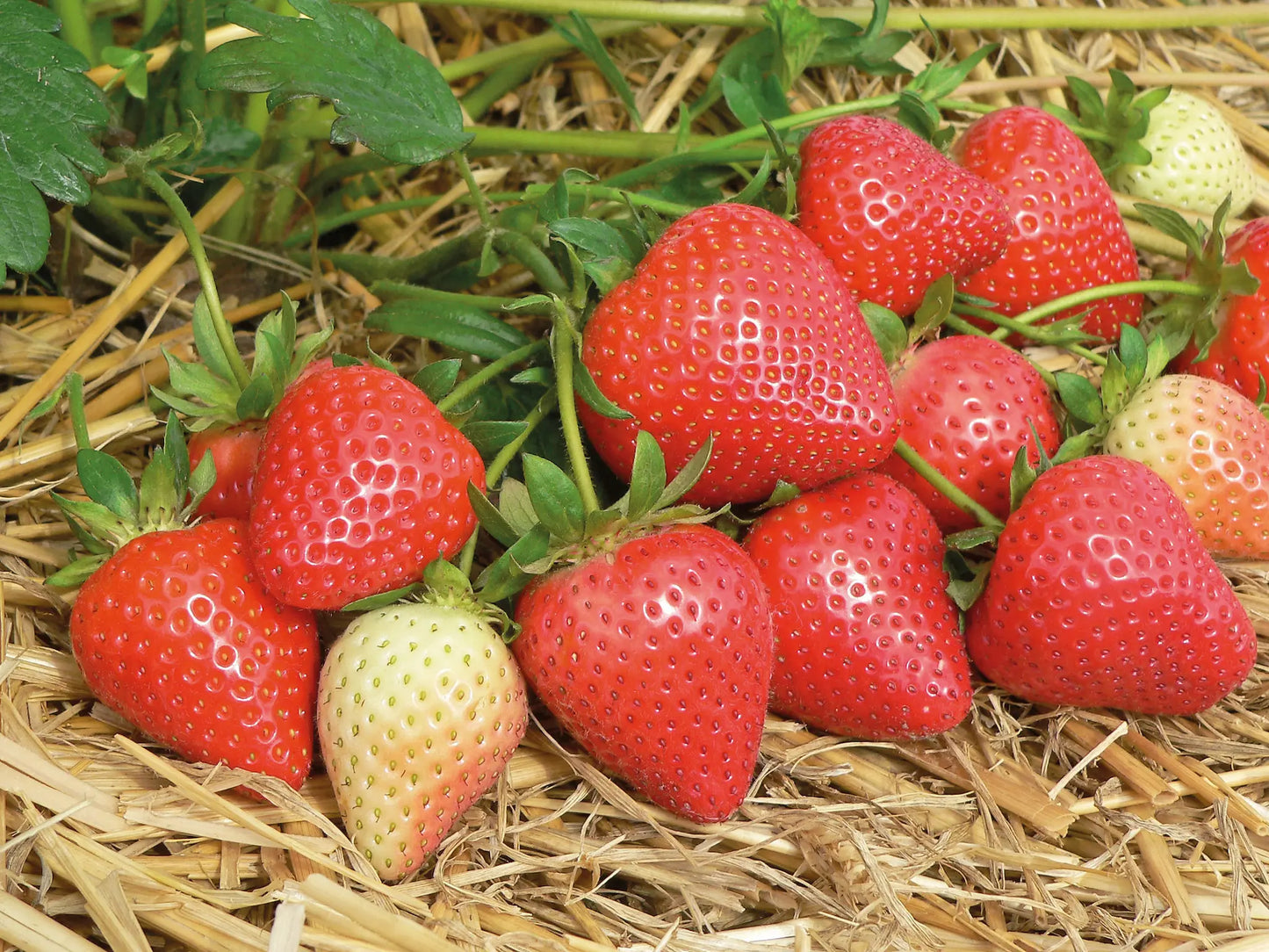
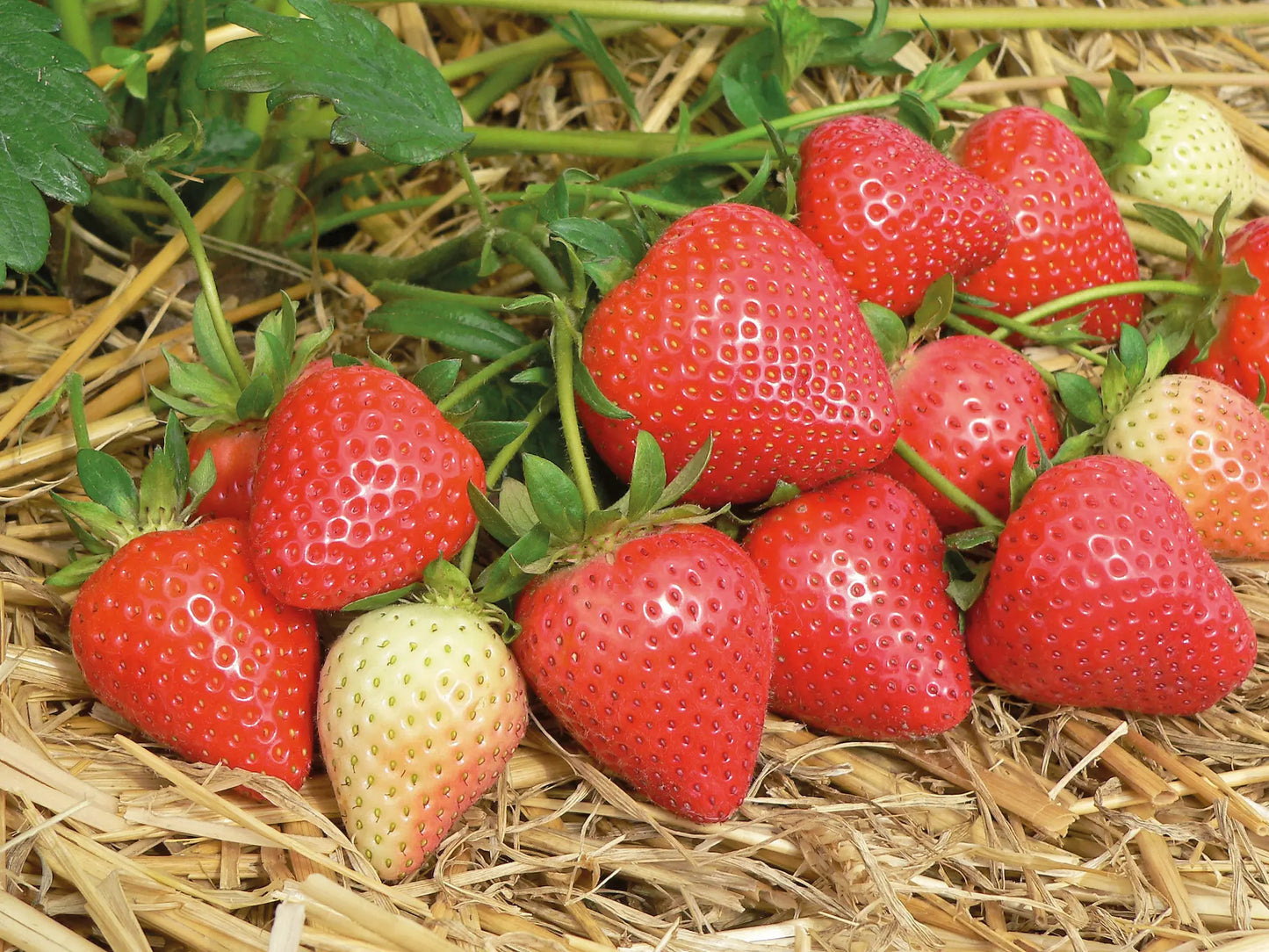
Collapsible content
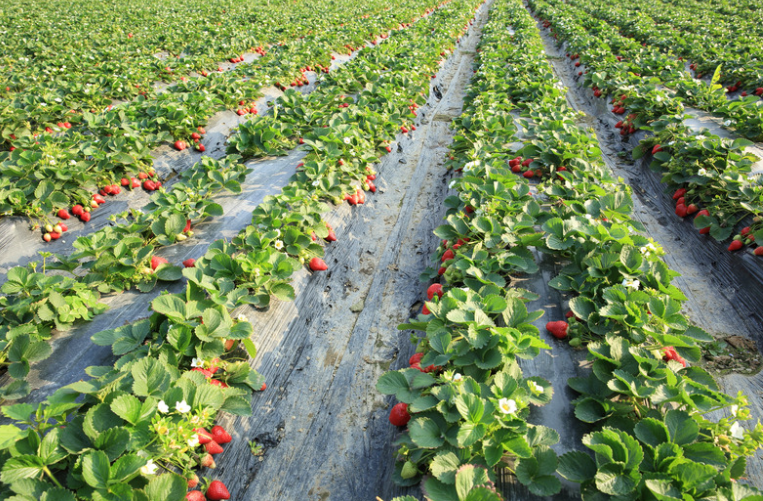
Strawberry Plant Buying Guide: What Type of Plants? For What Market Opportunity?
Which format should you choose: refrigerated, fresh, tray-plants, waiting bed, or plugs? Compare yields, costs, and harvest times at a glance.
Download the PDF guide (13 pages)
Why read this guide?
- Comparison tables: yield (300–600 g/plant), cost & labor.
- Reservation/delivery calendar for each format.
- Minimum order: 20 to 1,000 plants depending on the type.
- Full-field vs. above-ground case studies to maximize margin.
Overview of the 5 professional formats
Detailed comparison of formats
| Format | Yield (g/plant) |
Harvest time | Min. order | Average cost |
|---|---|---|---|---|
| Fridge | 250 – 400 | 120 days | 20 plants | 0.20 – 0.45 € |
| Costs | 280 – 420 | 140 days | 200 plants | 0.20 – 0.45 € |
| Tray plant | 400 – 600 | 90 days | 500 plants | 0.75 – 0.80 € |
| Waiting Bed | 300 – 500 | 105 days | 500 plants | 0.50 – 0.60 € |
| Motte | 230 – 350 | N+1 | 1,000 plants | 0.35 – 0.50 € |
Delivery schedule
| Plant type | Jan | Feb | Mar | Apr | May | Jul | Jul | Aug | Sep | Oct | Nov | Dec |
|---|---|---|---|---|---|---|---|---|---|---|---|---|
| Fridge | ||||||||||||
| Tray plants | ||||||||||||
| Waiting Bed | ||||||||||||
| Motte | ||||||||||||
| Costs |
Which format for which scenario?
Full field controlled budget
Fridge or Fresh : cost 2 x lower than tray plants, planting flexibility.
Above ground in greenhouse
Tray-plants : harvest 90 days after planting, uniform size, reduced labor.
Late planting
Mottes : planting July–August, rapid recovery, harvest the following year.
Ready to plan your plantings?
Download the complete guide Request a quoteFrequently Asked Questions
Is the guide free?
Yes, no fees or obligation to purchase.
How to download it?
Click the button “Download the guide” ; the PDF opens immediately.
Can I request a personalized quote?
Of course: write to us at contact@fraisiverse.com and an agronomist will respond to you within 24 hours.
Choosing the right strawberry varieties for your plot
Extend your harvest season by up to 5.5 months with our "early + season + everbearing" method. Compare 78 cultivars, sizes, and markets.
Download the PDF guide (17 pages)
4 axes to decide quickly
- Harvest Window : Early, Seasonal, or Everbearing? Combine them for 5.5 months .
- Commercial outlet : direct sales, long circuit, processing or freezing.
- Type of plants : fridge, fresh, root ball, tray plants… adapt your investments and your schedule.
- Growing conditions : open field, soilless, greenhouse; target consistent yield and size.
Axis 1: Select your harvest window
Example of recommended mix:
- Ciflorette (early) → Rubis des Jardins (season) → Charlotte (remontant).
- 5.5 months of continuous production, ideal for direct sales.
Axis 2: Sell at the right market
Direct sales
Ciflorette, Charlotte, Mara des Bois: premium taste sought after by consumers.
Long circuit / GMS
Magnum, Clery, Dream: uniform size, 95% class 1 fruit.
Transformation
Darselect, Mara des Bois – high sugar content and stable aroma.
Freezing
Honeoye, Belrubi – firm flesh, keeps well in the cold.
Axis 3: Choose the right type of plants
| Kind | Reservation | Delivery | Highlights |
|---|---|---|---|
| Fridge | All year round | Dec. → Aug. | Flexibility & price |
| Tray plants | Feb. → June | Nov. → Apr. | Above ground, harvest 90 days after planting |
| Motte | Sep. → May | Jul. → Sep. | Ideal for open fields, harvest N+1 |
| Costs | Feb. → Aug. | Sep. → Nov. | Young plants, rapid recovery |
Axis 4: Optimize your technical constraints
Tray plants guarantee +25% yield and simplified harvesting above ground; ideal for mechanizing your production and ensuring consistent size.
Frequently Asked Questions
Is the guide really free?
Yes, with no cost or obligation to purchase.
How to download it?
Just click the button “Download the guide” at the top of the page; the PDF opens immediately.
Can I request a personalized quote?
Of course: contact us via our contact page .
When to plant? When to harvest?
Do you want to start a strawberry farm but don't know when to reserve your plants, when to plant them or even harvest them?
Because we love 🍓 (with just a little sugar), we're going to do the work for you. On this page, you'll find the growing steps for each type of strawberry plant. When to order? What is the delivery period? When to plant? And finally, when to harvest?
Production Calendar - Frigo Strawberry Plants
| Production Calendar - Frigo Strawberry Plants | ||||||||||||||||||||||||
|---|---|---|---|---|---|---|---|---|---|---|---|---|---|---|---|---|---|---|---|---|---|---|---|---|
| Jan | Feb | Mar | Apr | May | Jun | Jul | Aug | Sep | Oct | Nov | Dec | |||||||||||||
| Reservation | ||||||||||||||||||||||||
| Deliverable | ||||||||||||||||||||||||
| Recommended planting | ||||||||||||||||||||||||
| Harvest | ||||||||||||||||||||||||
Production Calendar - Fresh Bare-Root Strawberry Plants
| Production Calendar - Bare Root Strawberry Plants | ||||||||||||||||||||||||
|---|---|---|---|---|---|---|---|---|---|---|---|---|---|---|---|---|---|---|---|---|---|---|---|---|
| Jan | Feb | Mar | Apr | May | Jun | Jul | Aug | Sep | Oct | Nov | Dec | |||||||||||||
| Reservation | ||||||||||||||||||||||||
| Deliverable | ||||||||||||||||||||||||
| Recommended planting | ||||||||||||||||||||||||
| Harvest | ||||||||||||||||||||||||
Production Calendar - Strawberry Plants Plugs
| Production Calendar - Strawberry Plants Motte | ||||||||||||||||||||||||
|---|---|---|---|---|---|---|---|---|---|---|---|---|---|---|---|---|---|---|---|---|---|---|---|---|
| Jan | Feb | Mar | Apr | May | Jun | Jul | Aug | Sep | Oct | Nov | Dec | |||||||||||||
| Reservation | ||||||||||||||||||||||||
| Deliverable | ||||||||||||||||||||||||
| Recommended planting | ||||||||||||||||||||||||
| Harvest | ||||||||||||||||||||||||
Production Calendar - Strawberry Plant Tray
| Production Calendar - Strawberry Plants Motte | ||||||||||||||||||||||||
|---|---|---|---|---|---|---|---|---|---|---|---|---|---|---|---|---|---|---|---|---|---|---|---|---|
| Jan | Feb | Mar | Apr | May | Jun | Jul | Aug | Sep | Oct | Nov | Dec | |||||||||||||
| Reservation | ||||||||||||||||||||||||
| Deliverable | ||||||||||||||||||||||||
| Recommended planting | ||||||||||||||||||||||||
| Harvest | ||||||||||||||||||||||||
Our Growing Guides by Plant Type / Our Growing Tips
Our online advisor: Fraisibot
Our technical itineraries by type of strawberry plant:
Technical Itinerary for Growing Strawberries from Frigo Plants
Technical Itinerary for Growing Strawberries from Plug/Pod Plants
Technical Instructions for Growing Strawberries from Tray or Mini Tray Plants
Technical Guide for Growing Strawberries from Bare-Root Fresh Strawberry Plants
Technical Instructions for Growing Strawberries from Waiting Bed Plants
All our growing tips for planting strawberries:
Strawberry Plants: Soil Preparation and Planting
Soil preparation for strawberry growing, planting techniques, and optimizing strawberry yield.
Best Practices for Irrigation and Fertilization of Strawberry Plants
Efficient irrigation systems, frequency and quantity of watering, types of fertilizers and application times, signs of nutritional deficiencies, growing strawberries in substrate, protection against frost and diseases.
Protection and Prevention of Strawberry Diseases and Pests
The main diseases and pests affecting strawberries, as well as effective methods for their prevention and treatment, including biological control and the use of resistant varieties. It provides practical advice for maintaining healthy and productive strawberry crops.
Succeeding in Strawberry Farming: Costs, Business Strategy and Subsidies
Growing strawberries requires significant initial and ongoing costs, but with effective marketing strategies and sustainable practices, growers can maximize their profits while contributing positively to the environment. Grants and financial aid are available to support necessary investments and encourage environmentally friendly farming practices.
Maximizing Strawberry Harvest and Storage: A Practical Guide
How to determine the optimal time to harvest strawberries, best practices for minimizing fruit damage during picking, and effective methods for storing and managing unsold strawberries to avoid losses and maximize profitability. It offers practical tips for extending the shelf life of strawberries, including refrigeration, freezing, and dehydration.
Strawberry Growing: Why Stagger Production? Early, Seasonal, Late? How to Choose?
Staggering strawberry production allows for harvests to be spread throughout the season, ensuring optimal fruit quality and increased profitability. Learn about recommended varieties for early, mid-season, and late-season production, as well as best practices for harvesting and storage.
Mailling Centenary strawberry variety technical sheet
- Remontant: Non-Remontant
- Precocity: Precocious
- Harvest period: End of May to end of June
- Shape, texture, appearance of the Fruit: Conical, uniform and firm
- Fruit color: Dark red, slightly darker than Elsanta
- Taste characteristics: Excellent flavor, very well known for its taste
- Fruit Size: Excellent flavor, well known for its taste
- Disease resistance: Very good shelf life, sensitive to Xanthomonas and Phytophthora Cactorum
- Yield, management and marketing: High yield. 95% class 1 fruit, easy to pick.
- Recommended commercial use / marketing channel: Direct sales, Wholesale
- Our advice: Suitable for direct or wholesale sales
Order your professional strawberry plants
Fraisiverse, a specialist wholesale supplier of strawberry plants , offers you the Malling Centenary variety, known for its precocity and high yield. Buying your strawberry plants ensures you a reliable supply, from specialized nurseries, with consistent professional quality. Benefit from producer prices , fast and careful delivery throughout France , interesting varietal resistance and dedicated technical support to optimize your performance. Our teams offer you personalized advice adapted to your growing conditions. The Malling Centenary seduces with its large size, its remarkable firmness and its excellent conservation, ideal for marketing. Order now or take advantage of our producer prices to anticipate your plantings and secure your volumes. Book now to guarantee your availability and maximize your production potential from the next season.
Varietal characteristics and agronomic performance
The Malling Centenary Strawberry is a non-remontant variety, of the "junebearing" type, meaning that it offers a single but generous annual harvest. Its earliness is notable, classified from early to mid-early, with ripening generally beginning 3 to 5 days after the Clery variety , and even 4 days before a standard reference in the sector, which allows it to position itself advantageously at the start of the season.
Morphology and size of fruits
The fruits are distinguished by a medium to large size , displaying an average weight of 23 to 25 grams per unit , and at peak production, between 60% and 65% of the fruits can exceed 35 mm in diameter , ensuring a very attractive size for the market. Their shape is conical, very regular and uniform , giving an impeccable aesthetic.
Visual and organoleptic qualities
At commercial maturity, the external color is a glossy dark red , slightly darker than Elsanta, but just as vibrant and consistent, even after storage. The internal flesh, on the other hand, is a consistent red to pinkish, offering a clean and attractive cut. Firmness is one of its major strengths, with a score of 9/9 for the skin and 7/9 for the flesh according to technical evaluations, ensuring excellent holding power during harvesting, transport and marketing, and resulting in a marked crunch in the mouth. In terms of taste, Malling Centenary offers an excellent to very good flavor , with an average sugar level (Brix) of around 8 , and rich and balanced aromas that favorably distinguish it from varieties such as Elsanta, making it more enjoyable to eat.
Technical management and soil and climate requirements
To fully exploit the potential of Malling Centenary, a rigorous cultural itinerary is recommended. The choice of soil or substrate is decisive: this variety prefers a fertile, light, well-drained and aerated soil , with a pH ideally between 5.5 and 6.5 . Incorporating rich, well-rotted organic matter, such as mature compost (30 to 50 tonnes per hectare) , is essential before planting to improve soil structure and nutrient availability.
Specifications for soilless cultivation
In soilless cultivation, the use of calcium-buffered coco substrates is crucial to prevent burn, and the electrical conductivity (EC) of the drain must be kept below 1.5 mS/cm to avoid any loss of yield or quality due to salinity.
Specific nutritional program
Malling Centenary requires a higher calcium intake than other varieties, particularly during plant establishment, with a specific potassium/calcium (K/Ca) ratio to be adapted according to growth phases. An indicative fertilization plan for intensive open-field cultivation suggests annual applications of 70 to 120 kg/ha of Nitrogen (N), 60 to 80 kg/ha of Phosphorus (P₂O₅), and 120 to 180 kg/ha of Potash (K₂O) , these applications should be split for optimal absorption. Trace elements such as Magnesium, Boron, Iron and Zinc should be monitored and supplemented if necessary, for example by foliar applications.
Planting densities according to systems
Regarding planting density, it varies according to the growing system. In high-density soilless cultivation , 12 to 14 plants per square meter , or 8 to 14 plants per linear meter , are generally recommended, with a substrate volume of approximately 1 to 1.25 liters per plant . For open ground cultivation, a typical density of 40,000 to 50,000 plants per hectare is common, although a higher density (up to 66,700 plants/ha ) is possible for intensive cultivation under cover. Malling Centenary is sensitive to active frosts at flowering time , as its flowers are exposed above the foliage; adequate protection against spring frosts is therefore imperative.
Production and harvest schedule
The Malling Centenary strawberry plant is distinguished by its high yield . Under French professional conditions, an average production of 450 to 700 grams per plant can be expected. Per hectare, this represents a potential of 18 to 35 tonnes , depending on planting density and cultivation management. This variety is particularly efficient with an exceptional rate of first category fruit (Class I), reaching up to 95% of the harvested fruit , which minimizes the volume of waste to only 5%.
Marketing window
The harvest window extends from late May to late June , positioning this variety in the early to mid-early niche. Production is remarkably concentrated: around 70% of the harvest is generally obtained in a period of 3 to 4 weeks , occurring around weeks 22 to 25 of the year (early to late June). This concentration greatly facilitates the planning of labor and picking operations, which are also accelerated by the simple structure of the bunches and the large size of the fruits.
Phytosanitary strategy and management of pests and diseases
The health management of Malling Centenary requires special attention. While it has intermediate resistance to powdery mildew (Podosphaera aphanis) , it is sensitive to several root diseases , including Phytophthora cactorum, Xanthomonas, and Pestalotiopsis . This sensitivity requires increased vigilance in the choice of soil and rigorous prophylactic management, including a 3 to 4 year crop rotation to limit the accumulation of pathogens in the soil.
Aerial Pest Management
Regarding common pests such as thrips, aphids, spider mites, weevils (Anthonomus rubi) and Drosophila suzukii , the sources consulted do not document specific resistance for Malling Centenary. Therefore, usual integrated pest management methods should be applied, including monitoring, biological control (use of auxiliaries), and if necessary, targeted chemical interventions, without expecting any particular varietal tolerance for these pests. The variety is also sensitive to herbicides , which may influence weed control methods.
Commercial valuation and feedback
Malling Centenary is a versatile variety, perfectly suited to both fresh consumption and industrial processing . For the fresh market, its advantages are undeniable: remarkable firmness, a uniform conical shape, a bright dark red color and excellent shine make it very attractive on the shelves. Its very good post-harvest stability and resistance to transport are key factors for downstream logistics, minimizing post-harvest losses.
Industrial applications
For industrial processing, its firmness allows it to retain a good texture after cooking , which is sought after for making jams, coulis or other desserts. In addition, the potentially lower harvesting cost and the high percentage of class 1 fruit (95%) make it an economically advantageous choice for agro-industrial companies.
Professional testimonials
Feedback from growers highlights that Malling Centenary is a variety valued for its reliability and performance . The "exceptional" flavor and sugar/acidity balance are often highlighted as key selling points, particularly for direct sales channels and markets demanding quality. The ease of picking thanks to the size of the fruit and the regularity of the size are also major positive points for the organization of work and the reduction of labor costs.
However, the sensitivity of flowers to spring frost and root diseases is an aspect that must be taken into account and managed proactively. This means that crop protection (tunnels, greenhouses) is often preferred or that specific cultural practices (rotation, choice of healthy soil) are imperative to maximize its potential and secure production.
To summarize: Our Malling Centenary strawberry plants
At Fraisiverse , we make it a point of honor to provide professional producers with the best quality. As a specialist wholesale supplier of strawberry plants , we offer you the Malling Centenary variety, selected for its precocity, generous size and balanced flavor. This variety is distinguished by a yield of up to 35 tons per hectare and an exceptional rate of 95% of first-class fruits, ensuring excellent commercial valuation. Choosing to Buy Malling Centenary strawberry plants means benefiting from plants from certified nurseries, perfectly adapted to soilless or open-ground systems. Our role as a specialist wholesale supplier of strawberry plants commits us to guaranteeing responsive technical monitoring, fast deliveries and competitive prices to optimize your margins. The Malling Centenary meets the expectations of short supply chains as well as industrial processing thanks to its firmness and good post-harvest performance. By choosing to Buy Malling Centenary strawberry plants , you are ensuring a reliable, efficient and profitable product. We remain your preferred partner, a specialist wholesale supplier of strawberry plants , to support your agricultural success. Make the strategic choice to buy Malling Centenary strawberry plants and benefit from recognized expertise on the French market.
-
Malling Centenary Frigo A- Strawberry Plant
Regular price €0,18 EURRegular priceUnit price / per -
Malling Centenary Frigo A Strawberry Plant
Regular price €0,19 EURRegular priceUnit price / per -
Malling Centenary Fresh Bare-Root Strawberry Plant
Regular price €0,20 EURRegular priceUnit price / per -
Malling Centenary Potted Strawberry Plant
Regular price €0,27 EURRegular priceUnit price / per -
Malling Centenary Frigo A+ Strawberry Plant
Regular price €0,28 EURRegular priceUnit price / per -
Malling Centenary Organic Potted Strawberry Plant
Regular price €0,34 EURRegular priceUnit price / per






